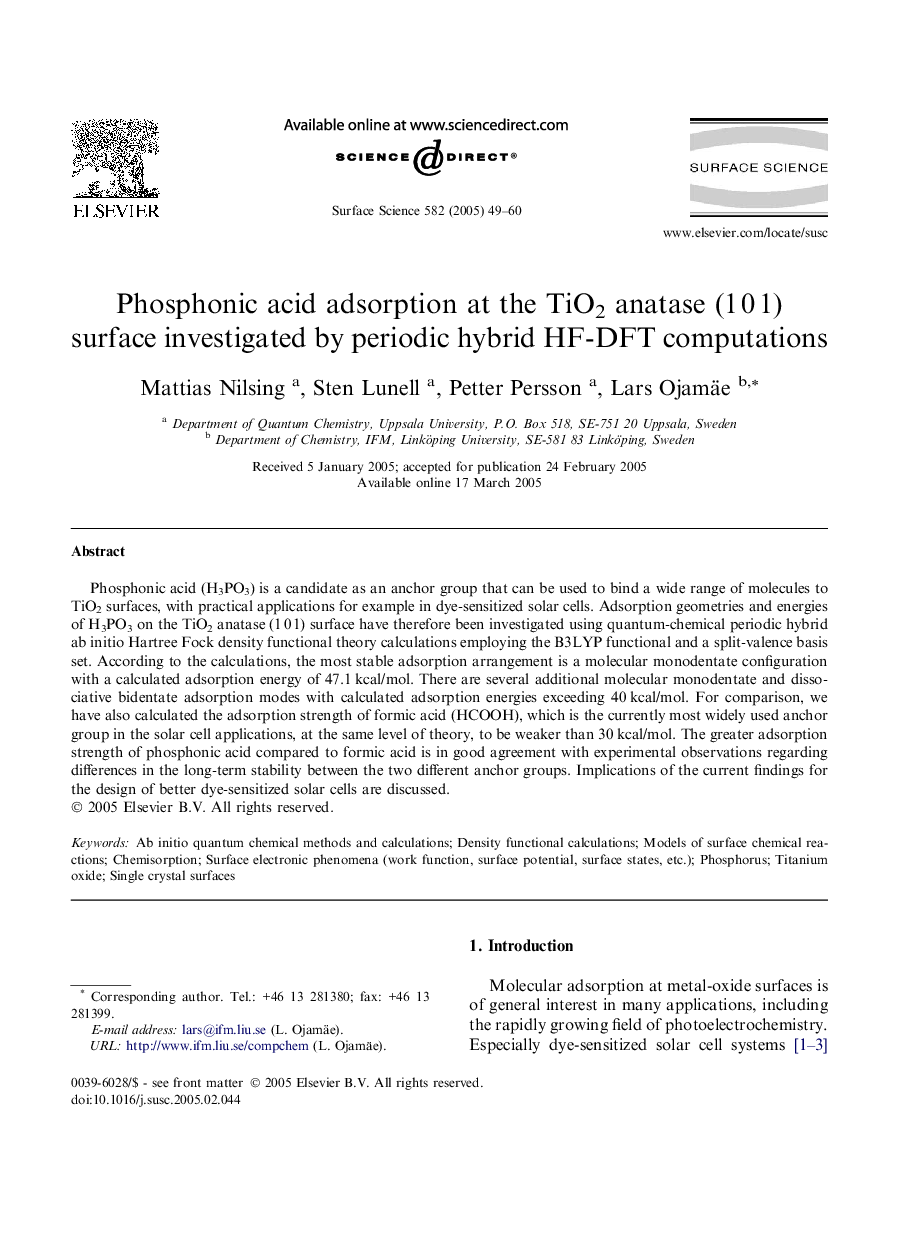| کد مقاله | کد نشریه | سال انتشار | مقاله انگلیسی | نسخه تمام متن |
|---|---|---|---|---|
| 9594849 | 1507977 | 2005 | 12 صفحه PDF | دانلود رایگان |
عنوان انگلیسی مقاله ISI
Phosphonic acid adsorption at the TiO2 anatase (1Â 0Â 1) surface investigated by periodic hybrid HF-DFT computations
دانلود مقاله + سفارش ترجمه
دانلود مقاله ISI انگلیسی
رایگان برای ایرانیان
کلمات کلیدی
Titanium oxide - اکسید تیتانیوم Chemisorption - جذب سطحی شیمیاییAb initio quantum chemical methods and calculations - روش های اولیه و روش های شیمیایی کوانتومی و محاسباتSingle crystal surfaces - سطوح کریستال تکPhosphorus - فسفرDensity functional calculations - محاسبات عملکردی تراکمModels of surface chemical reactions - مدل های واکنش های شیمیایی سطحSurface electronic phenomena (work function, surface potential, surface states, etc.) - پدیده های الکترونیکی سطح (عملکرد کار، پتانسیل سطح، سطح سطح، و غیره)
موضوعات مرتبط
مهندسی و علوم پایه
شیمی
شیمی تئوریک و عملی
پیش نمایش صفحه اول مقاله

چکیده انگلیسی
Phosphonic acid (H3PO3) is a candidate as an anchor group that can be used to bind a wide range of molecules to TiO2 surfaces, with practical applications for example in dye-sensitized solar cells. Adsorption geometries and energies of H3PO3 on the TiO2 anatase (1Â 0Â 1) surface have therefore been investigated using quantum-chemical periodic hybrid ab initio Hartree Fock density functional theory calculations employing the B3LYP functional and a split-valence basis set. According to the calculations, the most stable adsorption arrangement is a molecular monodentate configuration with a calculated adsorption energy of 47.1Â kcal/mol. There are several additional molecular monodentate and dissociative bidentate adsorption modes with calculated adsorption energies exceeding 40Â kcal/mol. For comparison, we have also calculated the adsorption strength of formic acid (HCOOH), which is the currently most widely used anchor group in the solar cell applications, at the same level of theory, to be weaker than 30Â kcal/mol. The greater adsorption strength of phosphonic acid compared to formic acid is in good agreement with experimental observations regarding differences in the long-term stability between the two different anchor groups. Implications of the current findings for the design of better dye-sensitized solar cells are discussed.
ناشر
Database: Elsevier - ScienceDirect (ساینس دایرکت)
Journal: Surface Science - Volume 582, Issues 1â3, 10 May 2005, Pages 49-60
Journal: Surface Science - Volume 582, Issues 1â3, 10 May 2005, Pages 49-60
نویسندگان
Mattias Nilsing, Sten Lunell, Petter Persson, Lars Ojamäe,